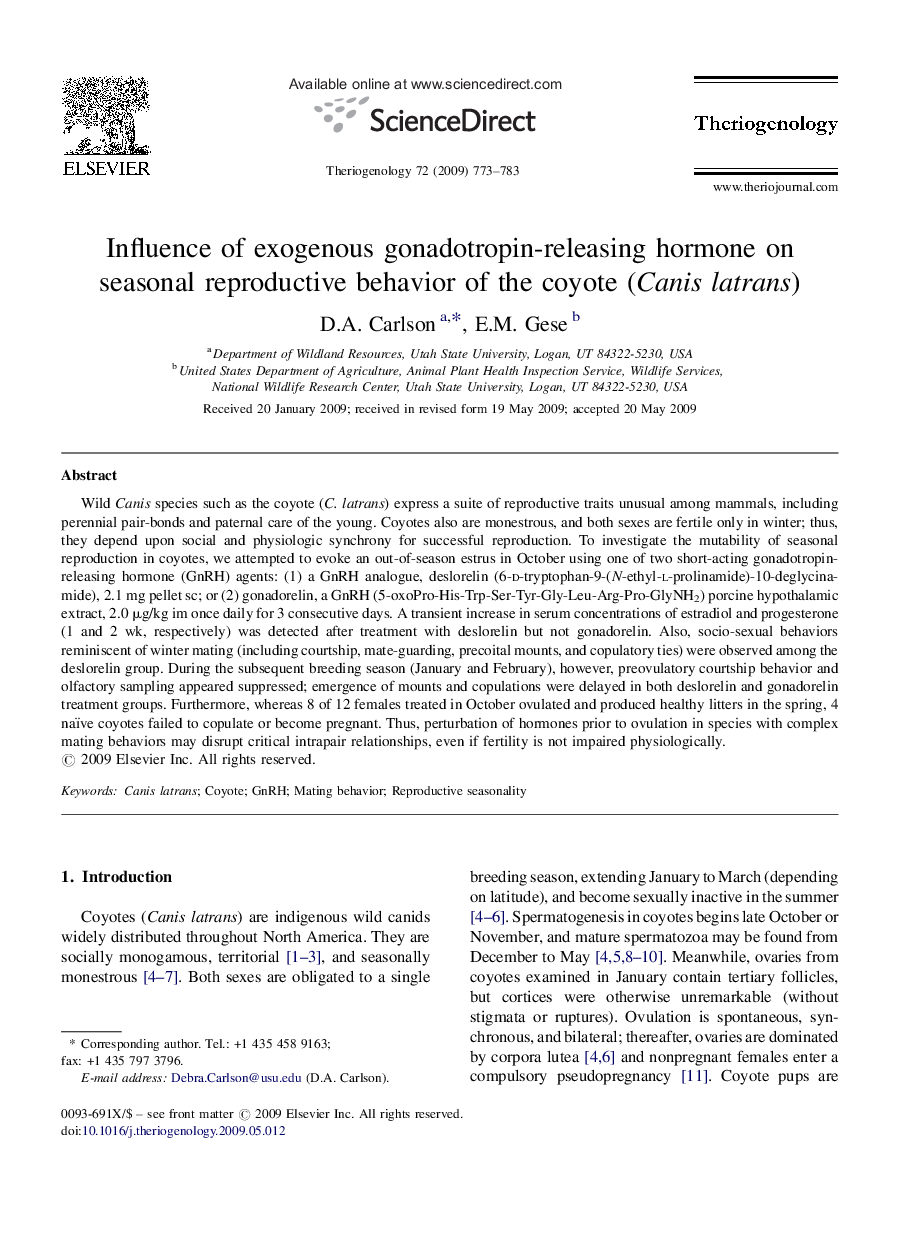| Article ID | Journal | Published Year | Pages | File Type |
|---|---|---|---|---|
| 2096673 | Theriogenology | 2009 | 11 Pages |
Wild Canis species such as the coyote (C. latrans) express a suite of reproductive traits unusual among mammals, including perennial pair-bonds and paternal care of the young. Coyotes also are monestrous, and both sexes are fertile only in winter; thus, they depend upon social and physiologic synchrony for successful reproduction. To investigate the mutability of seasonal reproduction in coyotes, we attempted to evoke an out-of-season estrus in October using one of two short-acting gonadotropin-releasing hormone (GnRH) agents: (1) a GnRH analogue, deslorelin (6-d-tryptophan-9-(N-ethyl-l-prolinamide)-10-deglycinamide), 2.1 mg pellet sc; or (2) gonadorelin, a GnRH (5-oxoPro-His-Trp-Ser-Tyr-Gly-Leu-Arg-Pro-GlyNH2) porcine hypothalamic extract, 2.0 μg/kg im once daily for 3 consecutive days. A transient increase in serum concentrations of estradiol and progesterone (1 and 2 wk, respectively) was detected after treatment with deslorelin but not gonadorelin. Also, socio-sexual behaviors reminiscent of winter mating (including courtship, mate-guarding, precoital mounts, and copulatory ties) were observed among the deslorelin group. During the subsequent breeding season (January and February), however, preovulatory courtship behavior and olfactory sampling appeared suppressed; emergence of mounts and copulations were delayed in both deslorelin and gonadorelin treatment groups. Furthermore, whereas 8 of 12 females treated in October ovulated and produced healthy litters in the spring, 4 naïve coyotes failed to copulate or become pregnant. Thus, perturbation of hormones prior to ovulation in species with complex mating behaviors may disrupt critical intrapair relationships, even if fertility is not impaired physiologically.
